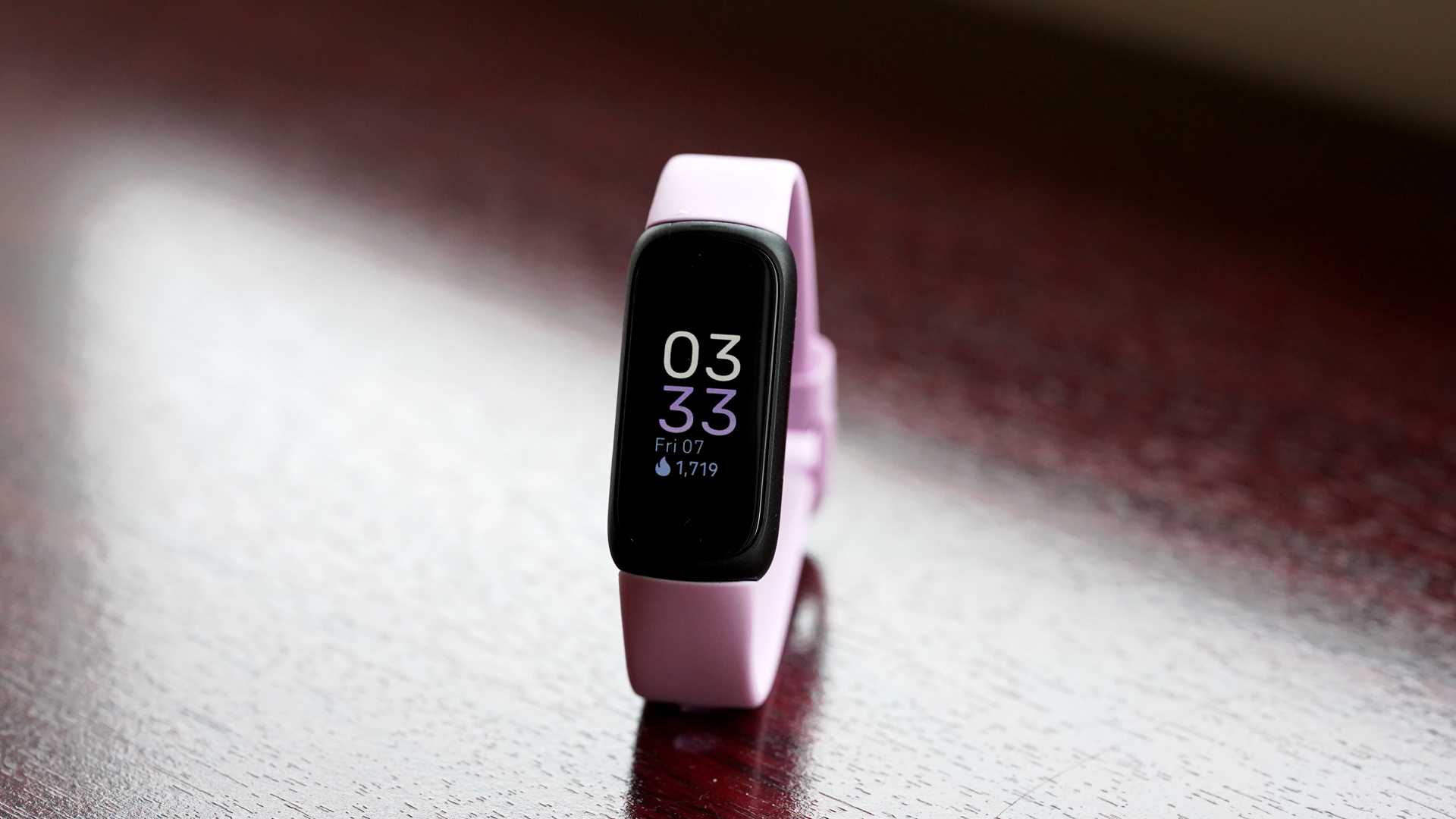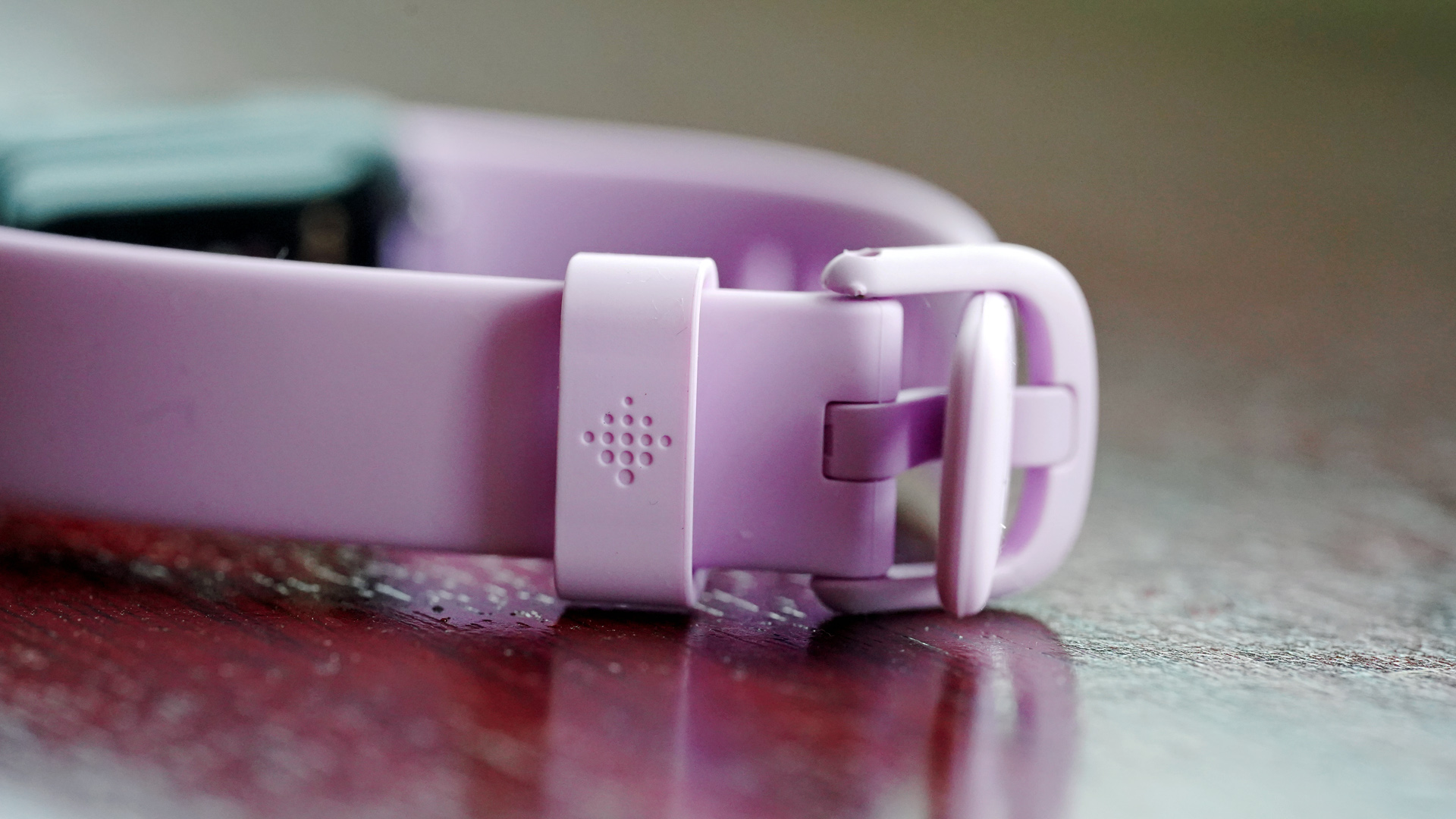Fitbit Inspire 3 review: sensory overload
The Inspire 3 adds plenty of new sensors and comes with a 6-month Fitbit Premium subscription


The Fitbit Inspire 3 is a lively fitness tracker with a colour touchscreen display and updated sensors that track heart rate variability, sleep, and changes in skin temperature, on top of other metrics most fitness trackers should be able to monitor nowadays, such as heart rate, steps, calories burned and more. Perfect for passive fitness tracking.
-
+
Colour screen
-
+
Monitors blood oxygen levels
-
+
Can send irregular heart rate warnings (aFib)
-
+
Updated physical design is more in-line with Fitbit's overall design direction (and looks pretty, too)
-
+
Super lightweight — you can hardly feel it on your wrist
-
-
There are many cheaper fitness trackers with similar functionality
-
-
Admittedly, the tracker form limits (i.e. small screen) what data is available to view on the wearable
Why you can trust T3

Fitbit isn't giving up on fitness bands. One might think that dainty fitness trackers like the Fitbit Inspire 3 aren't needed anymore, but that clearly not the case. And after spending some quality time with Fitbit's mid-range fitness band, I can see why it's kept alive. It's inoffensive, tracks all the health metrics it needs to track just fine, and feels almost weightless on the wrist – what's not to like?
Is it good enough to be included in T3's best Fitbit and best fitness tracker guides, though? Should you upgrade from the Fitbit Inspire 2? How does it compare to other fitness trackers on the market? And most importantly, how accurately does it track your day-to-day activities? Let's find out.
Fitbit Inspire 3 review – Price and availability
The Fitbit Sense 2 was announced in August 2022 and is available to buy now directly from Fitbit US, Fitbit UK and Fitbit AU for a recommended retail price of $99.95/£84.99/AU$179.95. The Fitbit Inspire 3 currently comes in three colourways: Midnight Zen / Black, Lilac Bliss / Black and Morning Glow / Black.
There aren’t any discounts available on the watch yet, although if Fitbit stays true to itself, we’ll see some minor price drops around Black Friday. If you need something a bit cheaper, you can always buy the Inspire 2, which sold for $55/£50/AU$100 at the time of writing this review. For the best prices on Fitbits, check out T3's best Fitbit deals roundup.

Fitbit Inspire 3 review – What’s new?
The Fitbit Inspire 3 brings significant updates over its predecessor: it added a colour, always-on screen, and an ambient light sensor, enabling the tracker to adjust the background light based on how bright it is (e.g. lower brightness in dark environs). The physical design of the new tracker is more in line with how the Fitbit Sense 2 and Versa 4 look.
The sensors have also been updated. The Inspire 3 tracks heart rate and sleep, but it can also track blood oxygen levels via its infrared sensors. It even supports irregular heart rhythm notifications and helps you notice the signs of atrial fibrillation (AFib). The new fitness band has a skin temperature sensor and a barometer.

Fitbit Inspire 3 review – Build quality
The first word that comes to mind when looking at the Inspire 3 is dainty. It might just be because I tested the version with the pink strap, but I feel it radiates the same qualities in other colourways, too. Said coloured strap is made of silicone and has a traditional buckle connection, which isn't as classy as the Fitbit Sense 2's Infinity Band design, but it holds the two sides of the strap together fine, which is the point of the buckle, I guess.
Get all the latest news, reviews, deals and buying guides on gorgeous tech, home and active products from the T3 experts
The updated screen is a bit longer than the Inspire 2's and is now in colour. Better still, the touchscreen operates as smooth as butter – I never had any issues with lag or it not being responsive. There are two capacitive buttons on each side of the case, and these work surprisingly well. I disliked all previous attempts to make the capacitive buttons work on Fitbit wearables, but I found it surprisingly pleasant to use them here.
Inspire 3 is swim-proof and water-resistant to 50 metres; it can even count strokes when swimming! Heart rate accuracy underwater is a different story, although I haven't actually tested it. Will update the review once I manage to wear the Inspire 3 for swimming.

Fitbit Inspire 3 review – Features
It would quite impossible to talk about the Inspire 3 without the Fitbit Premium subscription; they go together like tea and biscuits. And since the Inspire 3 comes with a 6-month Fitbit Premium subscription included in the price, which you can use even if you had Fitbit Premium before, it's most likely you'll get access to all features of Premium, at least for half a year.
With that in mind, some of the Inspire 3 features that might inspire you include Daily Readiness Score (via the Fitbit app; tells you how ready you are to exercise based on sleep, workout load, heart rate etc.), Active Zone Minutes (the tracker logs any activity automatically that elevates heart rate above a certain threshold), Cardio Fitness Score (it's in the name), connected GPS (no built-in GPS, sadly), automatic exercise tracking (not all of them but running, walking, cycling etc.) and so on.
It also tracks SpO2 (blood oxygen), sleep, skin temperature variation (only displays variation), heart rate variability (needed for Daily Readiness Score), breathing rate, Wellness Report (via the app), high & low heart rate notifications. As you can tell, the Fitbit Inspire 3 has quite a few useful features considering it's 'just' a fitness tracker. However, most of these features aren't available to view on the tracker, only in the Fitbit app.
It's understandable, though, as the display is rather small to view sleep trends, for example. The Fitbit Inspire 3 will display basic info. For anything more in-depth, check the Fitbit app. Simple.

Fitbit Inspire 3 review – Sleep tracking and activity tracking
Fitbit wearables are renowned for being the best sleep trackers around, and the Inspire 3 doesn't disappoint. Thanks to its updated sensors, sleep tracking is excellent, plus you can access a bunch of sleep data and trends on the advanced sleep dashboard in the Fitbit app (as long as you have Premium). Long story short, the Fitbit Inspire 3 is brilliant as a sleep tracker, and thanks to its lightweight construction, it's less bothersome to wear in bed than smartwatches.
As for activity tracking, it's fine, broadly speaking. The Fitbit Inspire 3 doesn't have built-in GPS, and there are only a handful of exercise modes available on the tracker (although you can change these in the Fitbit app). At least it recognises the most popular activities automatically, and that's how I would recommend using the Inspire 3: as a passive fitness tracker. I wouldn't base my training on the data I gather from the tracker, but for logging steps/calories/etc., it works perfectly fine.

Fitbit Inspire 3 review – Verdict
Is the Inspire 3 the best Fitbit or even the best fitness tracker? No, it isn't, but it's a much more capable fitness tracker than it used to be. It has a colour touchscreen display, updated sensors, can track heart rate variability, sleep, changes in skin temperature, on top of other metrics most fitness trackers should be able to monitor nowadays, such as heart rate, steps, calories burned and more.
Better still, it's easy to operate the fitness tracker using the touchscreen and the two capacitive buttons (or, more like, touch-sensitive areas) on the side. You won't be able to access a lot of information on the little screen, though, and many of the features the Inspire 3 provides data for are only available in Fitbit Premium, but since it comes with a half-year Fitbit Premium subscription included in the price, accessing these features shouldn't be an issue.
Should you upgrade from the Fitbit Inspire 2 to the Inspire 3? Absolutely. It's much better both in terms of user-friendliness and feature-richness. And unlike the Fitbit Sense 2 and the Versa 4, the Inspire 3 doesn't miss out on features because of the Pixel Watch. Highly recommended as a mid-range fitness band for everyday fitness tracking.
Fitbit Inspire 3 review – Also consider
It would be silly not to mention the Fitbit Charge 5, the best fitness tracker from Fitbit to date. It can measure ECG and track stress, estimate Daily Readiness Score, count Active Zone Minutes and has a beautiful (albeit a bit small) AMOLED screen. Oh, and it has a built-in GPS chip. Read my full Fitbit Charge 5 review.
The Huawei Band 7 is thinner, lighter, and comfier than ever - so much so that you’ll forget you’re wearing it. It tracks your workouts, sleep, steps, heart rate and blood oxygen accurately, and the AMOLED screen is seriously stunning. Perfect if you want to monitor everyday activities without forking out for a smartwatch. It's much cheaper than the Inspire 3, too, although it's not available in the US, sadly. Read our full Huawei Band 7 review.

Matt Kollat is a journalist and content creator who works for T3.com and its magazine counterpart as an Active Editor. His areas of expertise include wearables, drones, fitness equipment, nutrition and outdoor gear. He joined T3 in 2019. His byline appears in several publications, including Techradar and Fit&Well, and more. Matt also collaborated with other content creators (e.g. Garage Gym Reviews) and judged many awards, such as the European Specialist Sports Nutrition Alliance's ESSNawards. When he isn't working out, running or cycling, you'll find him roaming the countryside and trying out new podcasting and content creation equipment.